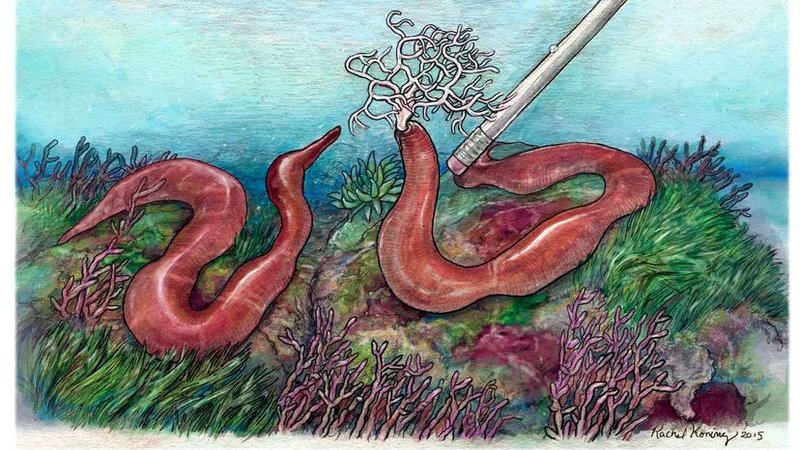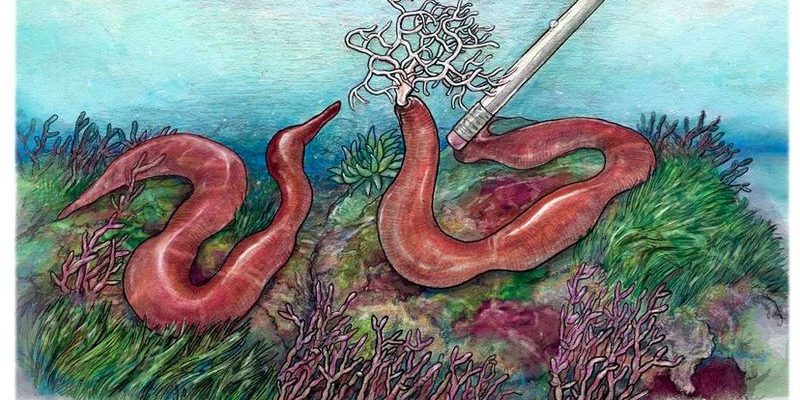
Let’s dive into the underbelly of the bootlace worm world, exploring their biology, habitat needs, and whether they can thrive in a captive environment. We’ll unravel this topic like peeling an onion, layer by layer, until we reach the core of understanding. So grab your coffee, and let’s get into it!
Understanding the Bootlace Worm
First, let’s get a grip on what bootlace worms actually are. These worms are *marine polychaetes*, which means they belong to the group of segmented worms found in the ocean. Their bodies are long, thin, and frail, which is why they can stretch to such incredible lengths. Imagine a spaghetti strand—only much weirder!
Bootlace worms are usually found in coastal waters across Europe, hiding in the sand and mud. You might find them lurking under rocks or wrapped around seaweed. Their diet primarily consists of organic matter and smaller marine organisms, which they capture through a fascinating method of feeding called *suspension feeding*. This means they filter tiny nutrients from the water, much like a sponge soaking up water.
Are Bootlace Worms Suitable For Captivity?
Here’s the thing: keeping bootlace worms in captivity is more complicated than it sounds. Their natural habitat is in the wild, where water conditions, food sources, and space are abundant. In captivity, replicating these conditions can be tricky. While it’s possible, a lot of planning and effort goes into it.
You might be wondering what kind of environment these worms need. Bootlace worms thrive in cool, salty waters, so creating a marine tank that mimics their natural surroundings is essential. This includes maintaining the right *salinity*, temperature, and *oxygen levels*. If you can’t meet these environmental needs, you might find these guys struggling to survive.
Setting Up a Marine Environment
If you’re determined to study bootlace worms, your first challenge will be setting up a suitable marine environment. Here’s a simple breakdown of what you’ll need:
- Aquarium Size: A large tank is preferable due to their length. Aim for at least a 50-gallon aquarium.
- Water Conditions: Use a *marine salt mix* to create the right salinity levels. Regularly check the pH, which should be around 7.8 to 8.5.
- Temperature Regulation: Maintain a cool temperature between 15–20°C (59–68°F) to mimic their natural habitat.
- Filtration System: A good filtration system is crucial for keeping water clean and oxygenated. Aim for a system that provides both mechanical and biological filtration.
Creating this setup can be a bit of a project, but it’s necessary for ensuring the health and well-being of your bootlace worms.
Feeding Bootlace Worms in Captivity
Feeding bootlace worms can also present its own challenges. In the wild, they filter-feed on microscopic organisms. In captivity, you’ll need to replicate this diet without overwhelming them with food.
You can provide them with a mix of finely crushed *marine pellets* and *detritus* (organic matter) from the tank substrate. Additionally, ensuring a steady flow of water will help bring in the nutrients they need. But be careful! Too much food can lead to water quality issues, which these worms are sensitive to.
Honestly, it’s a balancing act. You’ll want to monitor their feeding habits closely and adjust their diet based on their activity and health.
Monitoring Health and Behavior
When you keep bootlace worms in captivity, paying attention to their health is crucial. These creatures are delicate, and stress can lead to various problems. Signs of stress can include sluggishness, a lack of interest in feeding, or abnormal behavior like excessive twisting or curling.
To keep an eye on them, consider these tips:
– Regularly check water parameters and make adjustments as necessary.
– Observe their behavior daily to ensure they’re active and feeding.
– Keep the tank clean, avoiding the buildup of waste or uneaten food.
When it comes to health monitoring, the earlier you spot a potential issue, the better. Think of it like tending to a garden—if you notice a wilting plant, you address it before it spreads.
The Ethics of Keeping Bootlace Worms
One big consideration when keeping bootlace worms in captivity is the ethical aspect. Are we taking these creatures away from their natural environment for our benefit? It’s essential to think through whether our desire to study them outweighs the potential harm.
Before you dive headfirst into the world of captive bootlace worms, make sure to research and understand their conservation status. If they are endangered or threatened in the wild, it’s a good practice to reconsider whether keeping them is the right choice.
Sometimes, observing them in their natural habitat can lead to just as many discoveries without the potential ethical dilemmas.
Alternatives to Captive Study
If keeping bootlace worms doesn’t seem practical, there are alternatives for studying these fascinating creatures. Many marine research centers and aquariums offer opportunities for observation, allowing you to learn without the challenges of captivity.
Some organizations even engage in marine conservation efforts focused on protecting bootlace worms and their habitats. Partnering with such institutions can provide insights and hands-on experiences, all while supporting the well-being of these unique animals.
Furthermore, consider diving or snorkeling trips where you can see bootlace worms in their natural habitat. Engaging with marine life in its own environment can be a rewarding experience that fosters curiosity and understanding.
Keeping bootlace worms in captivity for study is definitely possible, but it comes with its own set of challenges. From creating the right environment to monitoring their health, there’s a lot to consider. And while it might be a rewarding experience, it’s essential to weigh the ethical implications and consider alternatives.
In the end, whether you choose to keep bootlace worms or observe them in the wild, embracing their complexity will deepen your appreciation for these unique creatures. So, find joy in the exploration, and keep your curiosity alive—there’s a whole world of wonder waiting beneath the waves!

